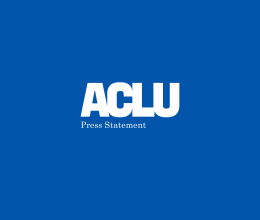
For South Dakota students, the first day of school is quickly approaching – probably more quickly than some kids would like.
They’re excited. Maybe even a little nervous. I know my kiddos are.
For me, however, I’m more concerned about the quality of their education and what they are learning. Or in many cases, not learning.
All young people should have equal access to an education that includes learning the complete history of this country, including the experiences and viewpoints of marginalized communities. Unfortunately, in the United States, too many public schools fail to teach about diverse communities in their curriculum. For Native Americans, this disparity is even more stark. According to the National Congress of American Indians, 27 states make no mention of Native Americans in their K-12 curriculum, and 87 percent of state history standards do not mention Native American history after 1900.
This summer, more than 50 South Dakota teachers, museum experts, and professors spent eight days in Pierre drafting new standards for the state’s K-12 social studies curriculum. It’s a process that happens once every seven years. The working group’s draft recommendations included Native American history and culture – everything from Oceti Ŝakowiŋ stories in kindergarten to comparing and contrasting the structure of the U.S. government and sovereign tribal governments in eighth grade to studying tribal banking systems in high school.
But none of that was included in the draft of the social studies standards released by the Department of Education this week, as first reported by Forum News Service and South Dakota Public Broadcasting.
This is extremely troubling.
Students are the next generation of leaders who will move us through the journey to a more just and inclusive democracy. We cannot rob them of the requisite historical knowledge of Indigenous people in our state. The more South Dakota students can learn about our history – the good, the bad and the ugly – and the lessons it can teach us, the better prepared they will be to tackle the inequities and injustices present in our communities.
In addition to learning about the importance of Native American histories and modern-day contributions, teaching all students about Native culture and heritage can help reduce cultural misunderstandings, racial stereotyping, and fear-based ignorance. For Native American students specifically, culturally responsive education can help foster a feeling of belonging within the education system, support the growth and development of their identities, and help uphold the established political and legal sovereignty — independent governance — of their tribes. All of these things can lead to greater academic success.
Every student should have the right to receive an inclusive education and have an open and honest dialogue about America’s history. Removing these crucial conversations about Indigenous people from the state’s social studies standards is a clear step in the wrong direction on our long march for true equality.
Equal access to learning about Native American heritage and culture in our educational institutions is important. Our history must be accurately represented in every classroom.
Take Action
The proposed social studies standards are now posted for public comment on the Department of Education’s website. Writing elected officials is a great way to impact policy, so submit your comments before of the board’s first public hearing on Sept. 20.
We will continue to pay attention to how South Dakota proceeds on this matter and update our supporters accordingly.


